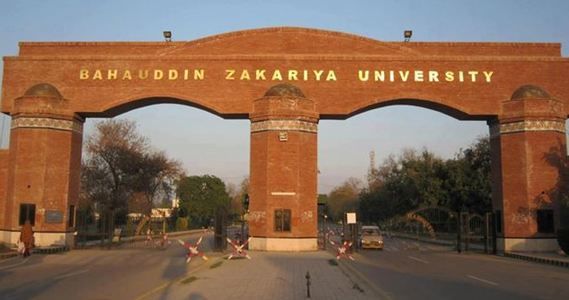Some of the most important practical revenue terminologies which are used by the revenue authorities or land record officer. These terminologies are beneficial for law students and also for those who want to learn legal terms to understand the land revenue act.
These revenue terminologies are also asked in the land record officer test or paper. These terms are used in land records.
Note: English grammer or structure may differ because this articles explaina native legal terminologies about Land Laws.
Most Popular Words and Terms used in Land Revenue Laws Of Pakistan
1. محال “Revenue Estate” means any area:-
(i) for which a separate record of rights has been made:
Or
(ii) Which has been separately assessed to land revenue:
(iii) Which the Board of Revenue may, by general rule or special order, declare to be an estate.
2. گاؤں/ موضع Village
3. آبادی دیہہ/آبادی Inhabited site of a village.
4. لال لکیر Boundary line showing the limit of village Abadi in Musavi (field map). It is in black ink but known as “lal lakir”.
5. مساوی Map of the estate which is prepared on a mapping sheet.
6. شجرہ کشتوار Field map of a revenue estate.
7. شجرہ پارچہ Field map of a Revenue Estate prepared on cloth for use of village Patwari.
8. تتمہ شجرہ Supplementary map, which prepared on mutation register and “Musavi do murabba wali” when a portion of Khasra No. change
9. من نمبر خسرہ Portion of a field (Khasra number)
10. سہ حدہ Tri-junction pillars erected at the point where boundaries of three or more Revenue Estates meet.
11. بُرجی Between two Try-junction pillars a small survey pillars, erected at every angle on the boundary line.
12. ٹھاک بست To verify the State distance between Try-junction pillars to tri-junction pillars Burji to burji and Burji to Try-junction pillers at the spot by “Jareeb” (chain) and on a field map by “paimana” (patwari scale)
13. کرہ کان یا کرم کان Length and breadth of a field.
14. لام پیٹ A method of calculating the area of irregular fields by an average of length and breadth.
15. مسل حقیقت Record of Rights prepared as a result of settlement, consolidation and killa bandi operation.
16. مسل میعادی Periodical Record i.e. a revised edition of Record of Rights (مِسل حقیقت) prepared after every four years.
17. شجرہ نسب مالکان Genealogical tree of owners of the land of a revenue estate. It has two parts A & B.
18. نمبر حد بست Serial number given to every Revenue Estate of a Tehsil by the Settlement Officer.
19. نمبر کھیوٹ/کھاتہ Serial number allotted to owners in Register Haqdaran Zamin.
20. نمبر کھتونی Serial number allotted to the cultivator in Register Haqdaran Zamin.
21. کھتونی نہر A statement prepared by canal Patwaris in each harvest showing area cultivated, land revenue and water rate, etc. to be recovered.
22. کھتونی چٹھہ یا کھتونی پیمائش Holding slips prepared in settlement or consolidation operations of an Estate before the preparation of Record of Rights. It also called Chitha Khatoni.
23. پرچہ کھتونی A memorandum (copy of holding slips) given to every owners and cultivator for verification and record.
24. کھتونی تحصیل A register maintained by Wasal Baqi Nawis in each Tehsil Office showing head-wise demand, recovery, and balance of Government dues relating to each Lamberdar.
25. ادنٰی مالک Inferior owner, now after the implementation of Land Reforms, they became owners of the Land.
26. اعلٰی مالک Superior owners, now they have become extinct after Land Reform.
27. مالک قبضہ An owner of the land who has no rights in “Shamlat deh” (common land of revenue estate).
28. مشتری بخانہ کاشت A vendee whose name is shown in cultivation column of Register Haqdaran Zamin and not in owners’ column.
29. رہن Mortgage with possession.
30. آڑ رہن یا مکفول الرہن Mortgage without possession.
31. راہن Mortgager
32. مرتہن Mortgagee.
33. دخیلکار مورثی یا مستقل Occupancy tenants (due to implementation of Land Reforms, they have almost acquired the rights of ownership.
34. مزارعہ تابعمرضی Tenant-at-will (this term is written for
غیردخیلکار۔ غیرمستقل۔ غیرموروث
35. واجب العرض Village administration papers or statement of customs respecting rights and liabilities in the Estate. It is prepared in Settlement.
36. نقل شرط واجب العرض Copy of some conditions of village administration papers.
37. شاملات دیہہ Common Land of a Revenue Estate. There are generally three types of Shamlat given as under:-
(i). شاملات دیہہ حسب رسد زر کھیوٹ (A common land of revenue Estate, which will be distributed on the base of Land Revenue of owners who have rights in (شاملات) Shamlat.
(ii). شاملات دیہہ حسب رسد کھیوٹ (A common land of a Revenue Estate, which will be distributed on the base of the area of every owner who have rights in Shamlat (شاملات)
(iii). شاملات دیہہ حسب حصص جدی (Common land which will be distributed on the base of the shares already given in Genealogical Tree (شجرہ نسب) in column “Paimana Haqiat (پیمانہ حقیقت)”
38. پتی/طرف/ٹھُلہ Sub-division of Estate.
39. پرتہ Rate Of Land Revenue
40. باچھ Distribution of revenue over holding, or Every landowner
41. ڈھال باچھ Statement showing the names and amount of Govt. dues recoverable from the Landowners to be given to Lambardar (headman) for recovery in each harvest.
42. فرد باچھ/فرد تفریق باچھ/فرد ڈھال باچھ Statement showing land revenue and other cases realizable from each holding (کھیوٹ)
43. نزول لینڈ Land or building escheated to Government, due to failure of heirs.
44. طلبانہ Charge for serving a summons.
45. دستک Notice of demand for payment of land revenue.
46. قرق تحصیل A coercive process u/s 85 of the Land Revenue Act, 1967 by which the land of a defaulter is attached on account of arrears of Land Revenue.
47. خام تحصیل Direct management of land of defaulter by Government after the annulment of assessment under Section 86 of the Land Revenue Act, 1967.
48. فصل خریف (ساونی) Autumn harvest. According to rule 14 of the Tenancy Rules, it is sown during the period from 1st April to 31st May and its crop inspection (گرداوری) is done in October. Its main crops are 1. چاول، مکئی، کپاس، کماد، باجرہ
49. زائد خریف Extra autumn harvest and its crops inspection is done from 15th November to 30th November. Its main crops are آلو، توریا
50. فصل بیعہ (ہاڑی) Spring harvest. According to rule 14 of the Tenancy Rules, it is sown during the period from 15th September to 15th November and its crops inspection (گرداوری) is done in March. Its main crops are -جو، گندم، تارامیرا (سرشف)، سرسوں(نخود)، چنے
51. زائد ربیعہ Extra spring harvest and its crops inspection is done from 15th April to 30th April. Its main crops are:- تھوم، تمباکو، تربوزہ، خربوزہ
52. کنکُوت یاکَن Appraisement of crops. To assess yield from standing crops.
53. پنجوترہ (فیس نمبرداری) Fee paid to Lambardar (Headman) out of The Govt. dues collected and deposited by him.
54. عرض ارسال A memorandum given by the patwari to Lambardar showing the head-wise amount of Government dues taken to Tehsil for depositing into the treasury.
55. سیاہ Daily cash account of a Tehsil.
56. سیاہ نویس Clerk responsible for writing up Siah (سیاہ)
57. فرد رفتار Crops inspection program prepared by the patwari showing the dates on which he will carry out Girdawry of a particular village of his circle.
58. جنسوار Statement/return of crops for every particular harvest.
59. وتر (بدستور) Diagonal line in Register Girdawari, which shows no change in cultivation and rent.
60. چاہی A land which is irrigated by well.
61. نل چاہی L land which is irrigated by tube-well.
62. تقادی Loan granted by the government to a Landowner for agricultural purposes.
63. چٹھہ جات Rough preliminary documents which are prepared in settlement operation before the preparation of the record of rights (مسل حقیقت)
64. قسط بندی The demand statement of fixed Land Revenue.
65. شریک کاشت (سیری) A person who cultivates the land of another person as a co-sharer on some agreed conditions, but does not enjoy the status of a tenant.
66. لال کتاب Village note Book prepared in accordance with Rule 71 of Land Revenue Rules, 1968 for each revenue Estate comprising eleven (11) statements showing all particulars of a revenue Estate. It is also prepared in a consolidated form in respect of each Assessment circle, Tehsil & District.
67. مقریدار A tenant who has an occupancy right in only Attock District in Punjab
68. حبوب۔ سوائی Sesses
69. آدھ لاپی A man, who by sinking a well in another man’s land acquires ownership in half of the land attached to the well.
70. ترنی/ بھونگا/ انگ Cesses on cattle levied by proprietors on other residents in a village for grazing in village waste.
71. بیگہ A measure of area. In Western Punjab, the “Biga” is half of an acre. (04-kanals)
72. بُوٹی مار A tenant who has acquired permanent rights in the land by clearing “Jangal”. (It is one of a condition by Government for acquiring permanent rights in Land).
73. چیکوتا Lump grain rent or rent consisting of a fixed amount of grain in the rabi
74. سرسری پرتہ All round rate of Land Revenue without discrimination of soils or classes of Land
75. سیر مانی A fee of one ser in the mound of produce paid in recognition of the proprietary title
I hope these revenue terminologies will serve you a great purpose and sharp your mind.







